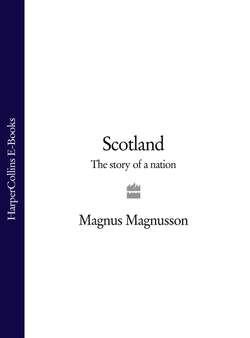Читать книгу Scotland: The Story of a Nation - Magnus Magnusson - Страница 35
Chapter 5 MALCOLM CANMORE AND ST MARGARET
ОглавлениеMalcolm III, called Canmore (or Great Head) … was a brave and wise prince, though without education. He often made war upon King William the Conqueror of England, and upon his son and successor William, who, from his complexion, was called William Rufus, that is, Red William.
TALES OF A GRANDFATHER, CHAPTER IV
The accession of Malcolm Canmore in 1058 marked the end of what Michael Lynch has called ‘the crisis of the mac Alpin succession’ (Scotland: A New History). It also marked the start of a highly formative period in the development of ‘Scotland’ as a modern state; in particular, Scotland’s boundaries along the lines we recognise today began to take shape now (apart from the later inclusion of the Northern Isles). For the next 230 years, until the death of Alexander III in 1286 (see Chapter 8), the throne of Scotland was occupied by a powerful royal dynasty which is called variously the ‘Canmore Dynasty’ or the ‘House of Dunkeld’. In comparison with preceding centuries, and with what was to come during the ‘Wars of Independence’, this was to be a period of considerable prosperity and relative peace.
Malcolm III, who reigned for thirty-five years (1058–93), has come down in history with a mixed reputation. Commentators have made much mock of his Gaelic nickname: ‘Canmore’ is from the Gaelic ceann mòr, meaning ‘Great Chief’, but it is frequently translated as ‘Big-head’. Nigel Tranter, in The Story of Scotland, called him ‘something of a boor, bloodthirsty and without statesmanlike qualities. His one delight was in raiding, pillage, slaughter.’ The historical records, however, are too scanty to justify such a sweeping judgement.
Malcolm’s chief preoccupation throughout his reign was the consolidation and extension of his kingdom of ‘Scotia’, or ‘Alba’. Thorfinn the Mighty, Earl of Orkney, died some time between 1057 and 1065 (it is, alas, impossible to be sure of the precise date), and with his death his widespread empire in the north, which was said in Orkneyinga Saga to have included nine earldoms on the mainland of Scotland, began to disintegrate. Malcolm helped the process by marrying Thorfinn’s widow, Ingibjörg; some sources say that Ingibjörg was Thorfinn’s daughter, not his widow, but no matter. Before her death, some time before 1069, Ingibjörg bore Malcolm two sons: Duncan (the future King Duncan II) and Donald (d.1085); more importantly, however, the marriage helped to neutralise or at least diminish the insistent pressure on Scotland from the north.
Malcolm’s main objective was to seize the perennially debatable lands of Northumbria and Cumbria. At this time there was no recognised border between the kingdoms of ‘Scotland’ and ‘England’; and once again the events in England were to provide an opportunity for an ambitious and energetic King of Scots. After the death in 1055 of Earl Siward of Northumbria, who had helped Malcolm gain a foothold in Scotland in 1054, the new earl was a Wessex warlord named Tostig (the half-brother of the future King Harold Godwinsson who would die at Hastings). During Tostig’s absence abroad in 1061, Malcolm launched a major raid into Northumbria. It was the first of no fewer than five incursions into the north of England which he was to make during his reign – none with lasting success, and the last, in 1093, at the cost of his life.
But Malcolm Canmore will always be overshadowed, in Scottish eyes at least, by the woman who became his second queen sometime between 1069 and 1071: Margaret, a princess of the old Saxon royal house, who would become Scotland’s only royal saint.
